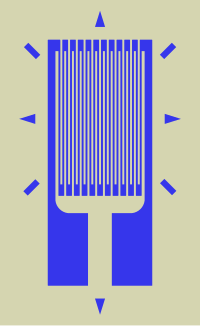
Photo from wikipedia
Abstract Comprehensive experimental characterization and numerical prediction have been performed to investigate the thermal effects on the anisotropic flow behavior of two high-strength steels in this study. For the experimental… Click to show full abstract
Abstract Comprehensive experimental characterization and numerical prediction have been performed to investigate the thermal effects on the anisotropic flow behavior of two high-strength steels in this study. For the experimental investigation of the anisotropic plasticity under the influence of temperature, uniaxial tensile tests have been conducted along three different loading directions covering the temperature range from 123 K to 773 K under the quasi-static loading condition. The results show that the thermal effects on the flow behavior are non-monotonic because not only the typical thermal softening but also the dynamic strain aging phenomena are observed. Moreover, the thermal effects on the anisotropy behavior are not constant but strain and material dependent. Regarding the numerical description, a generalized evolving plasticity model considering the evolution of thermal effects on flow behavior is proposed. With all material parameters systematically calibrated following a straightforward approach, the model is used to describe the temperature dependence of anisotropic plastic flow behavior of the investigated materials. The predictive capability of the model is validated by experimental results across a large temperature range even with the activation of complicated deformation mechanisms such as dynamic strain aging.
Journal Title: International Journal of Plasticity
Year Published: 2020
Link to full text (if available)
Share on Social Media: Sign Up to like & get
recommendations!